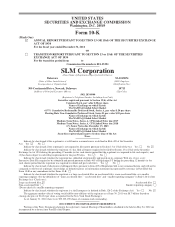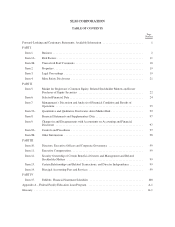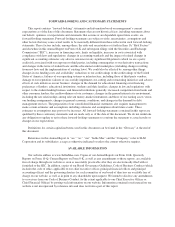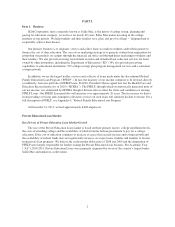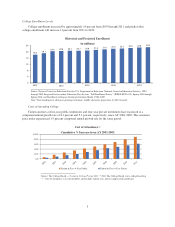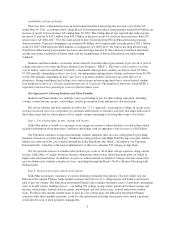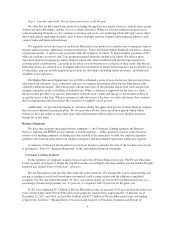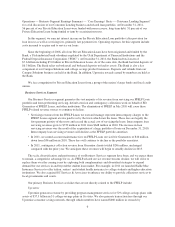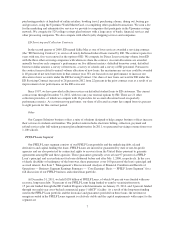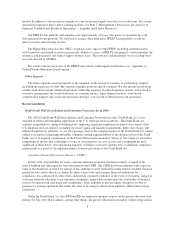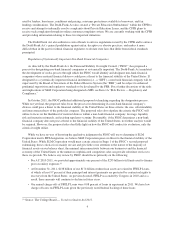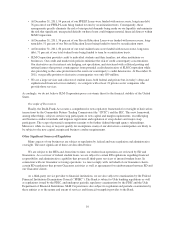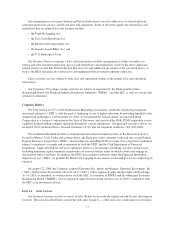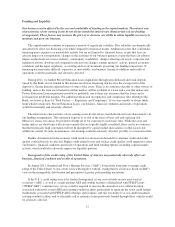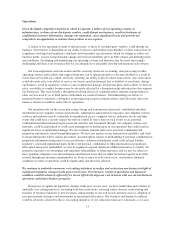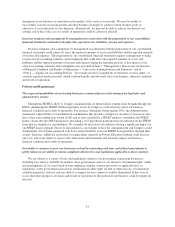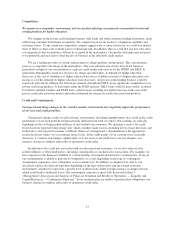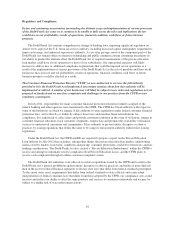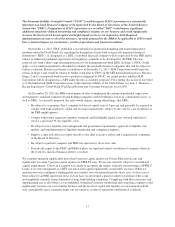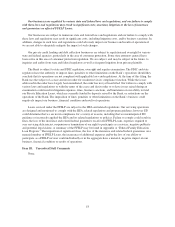Sallie Mae 2011 Annual Report Download - page 10
Download and view the complete annual report
Please find page 10 of the 2011 Sallie Mae annual report below. You can navigate through the pages in the report by either clicking on the pages listed below, or by using the keyword search tool below to find specific information within the annual report.modest. In addition to the net interest margin, we earn fee income largely from late fees on the loans. For a more
detailed description of these various funding facilities, see Item 7 “Management’s Discussion and Analysis of
Financial Condition and Results of Operations — Liquidity and Capital Resources.”
Our FFELP Loan portfolio will amortize over approximately 20 years. Our goal is to maximize the cash
flow generated by the portfolio. We will seek to acquire other third-party FFELP Loan portfolios to add net
interest income and servicing revenue.
The Higher Education Act (the “HEA”) regulates every aspect of the FFELP, including communications
with borrowers and default aversion requirements. Failure to service a FFELP Loan properly could jeopardize the
insurance and guarantees and federal support on these loans. The insurance and guarantees on our existing loans
were not affected by HCERA.
For a more fulsome discussion of the FFELP and various credit support mechanisms, see “Appendix A –
Federal Family Education Loan Program.”
Other Segment
The Other segment consists primarily of the financial results related to activities of our holding company,
including the repurchase of debt, the corporate liquidity portfolio and all overhead. We also include results from
smaller wind-down and discontinued operations within this segment. Overhead expenses include costs related to
executive management, the board of directors, accounting, finance, legal, human resources, stock-based
compensation expense and certain information technology costs related to infrastructure and operations.
Recent Legislation
Dodd-Frank Wall Street Reform and Consumer Protection Act of 2010.
The 2010 Dodd-Frank Wall Street Reform and Consumer Protection Act (the “Dodd-Frank Act”) was
intended to reform and strengthen supervision of the U.S. financial services industry. The Dodd-Frank Act
contains comprehensive change to banking laws, imposing significant regulation on almost every aspect of the
U.S. financial services industry, including increased capital and liquidity requirements, limits on leverage, and
enhanced supervisory authority. A year after passage, most of the component parts of the Dodd-Frank Act remain
subject to extensive rulemaking and public comment causing unpredictability of the ultimate effect of the Dodd-
Frank Act or of required examinations of the Private Education Loan market. However, the outline of several key
components of the law that could apply to some of our businesses are now clearer and we highlight the most
significant of these below. Our operational expenses will likely increase to address new or additional compliance
requirements as a result of the implementation of various provisions of the Dodd-Frank Act.
Consumer Financial Protection Bureau (“CFPB”)
In July 2011, responsibility for many consumer financial protection functions formerly assigned to the
federal banking and other agencies were transferred to the CFPB. The CFPB has broad authority with respect to
some of the businesses in which we engage. It has authority to write regulations under federal consumer financial
protection laws, and to directly or indirectly enforce those laws and examine financial institutions for
compliance. It is authorized to collect fines and provide consumer restitution in the event of violations, engage in
consumer financial education, track consumer complaints, request data and promote the availability of financial
services to underserved consumers and communities. It has authority to prevent unfair, deceptive or abusive
practices by issuing regulations that define the same or by using its enforcement authority without first issuing
regulations.
Under the Dodd-Frank Act, the CFPB and ED are required to prepare a report on the private education loan
industry by July 2012 that examines, among other things, the private education loan market; underwriting criteria
8

